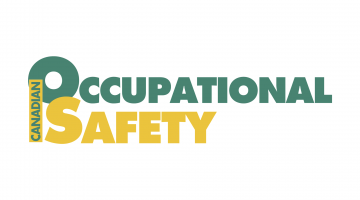Illness/injury prevention
IWH has a long history of conducting research to provide practical guidance to employers, workers, OHS professionals and regulators about what works and what doesn’t in injury or illness prevention. This research targets the injury and illness prevention practices of workplaces, as well as the programs developed by governments, health and safety associations and others to support and motivate workplaces to adopt effective practices.
Featured

At Work article
Differences in firm-level AI use for health and safety
To what extent are Canadian workplaces using artificial intelligence (AI) to help support workers’ health and safety? And what do these workplaces have in common? An IWH study surveyed firms across Ontario and British Columbia to find out.
Published: October 8, 2025

Impact case study
Saskatchewan’s construction safety group uses IWH tool to improve safety culture
This case study details how the Saskatchewan Construction Safety Association (SCSA) members have been analyzing IWH-OPM scores to adjust their safety practices and how SCSA has been using the data to tailor their outreach.
Published: February 10, 2025

Impact case study
IWH model on breakthrough change used as foundation for WSPS small business strategy
An Ontario health and safety association, Workplace Safety and Prevention Services, turned to the Institute's model of breakthrough change to inform its approach to small business, especially the concept of finding the "knowledge transformation leader" within a small business to advocate for occupational health and safety change.
Published: December 2017

IWH in the media
Companies fret about hazy rules around pot use
Once recreational cannabis use becomes legal, taking a “smoke break” at work could suddenly become much more complicated, writes Cassandra Szklarski of the Canadian Press. The Institute for Work & Health's Dr. Andrea Furlan and Dr. Nancy Carnide are among those interviewed.
Published: National Post, December 2017

IWH in the media
Ontario plans to review Working at Heights training
“Working at heights is one of the most dangerous types of work in the construction sector,” says Dr. Cameron Mustard, president and senior scientist, Institute for Work & Health, in an article on Ontario's plans to review working-at-heights training standards. “By working with stakeholders to evaluate the WAH standards, we will help ensure construction workers are protected on the job and will return home safely at the end of each workday.”
Published: Equipment Journal, December 2017
Project report
Project report
Implementing violence prevention legislation in hospitals: summary
This two-page summary shares the highlights of an Institute for Work & Health study that looked at acute-care hospitals in Ontario and how they implemented legislated violence prevention initiatives, to what effect, and the challenges they faced along the way.
Published: December 2017
IWH Speaker Series
IWH Speaker Series
Addressing essential skills gaps in an OHS training program: a pilot study
Can an occupational health and safety (OHS) training program be improved by modifying it to address gaps in essential skills? In a recent study, a research team led by Dr. Ron Saunders modified a hoisting and rigging training program offered by the LIUNA Local 506 training centre. The changes were made to address trainees’ skills gaps in numeracy and document use that were related to the job. In this plenary, the team share findings regarding the effect of modifying the curriculum on trainee learning and discuss suggestions for improving training efforts within the construction sector.
Published: November 2017

At Work article
IWH study examines effect of Ontario’s mandatory OHS training on awareness
On July 1, 2014, a new occupational health and safety requirement took effect in Ontario. An IWH research team conducted a study on differences in OHS awareness before and after the requirement took effect. Read about the findings.
Published: November 2017

IWH in the media
Workers with disabilities report greater OHS vulnerability
According to a new study by the Institute for Work and Health (IWH), workers who identify as having a disability are more likely to be exposed to workplace hazards. Additionally, they are more likely to face inadequate occupational health and safety (OHS) protections. “Basically, they get hit with a double whammy,” said Dr. Curtis Breslin, lead author of the study.
Published: Canadian Occupational Safety, November 2017

IWH in the media
Recent immigrants, refugees largely unaware of OHS: Researchers
When immigrants and refugees come to Canada, they are handed a 140-page document that contains only one small paragraph about employee rights. Unfortunately, this might be the only OHS exposure these workers receive, writes Amanda Silliker, reporting on an Institute for Work & Health research project.
Published: Canadian Occupational Safety, November 2017

At Work article
Study update: New cases of mesothelioma and asbestos-related lung cancer from one year cost $2.35B
What's the economic burden of mesothelioma and lung cancers due to work-related asbestos? An IWH team calculated the costs from just one year's worth of such cases.
Published: November 2017

At Work article
Workers with disabilities report greater hazard exposure and lower protection
Research elsewhere has shown that people with disabilities have a tough time getting hired. A new study at IWH now suggests we should also worry about those who do find jobs. Learn why.
Published: November 2017